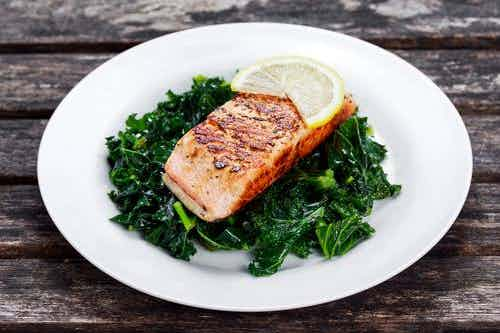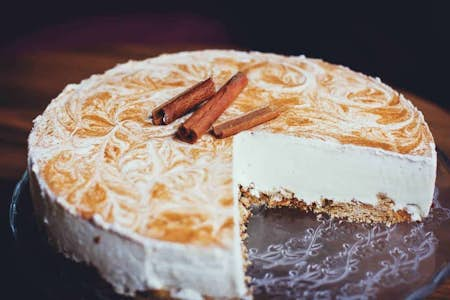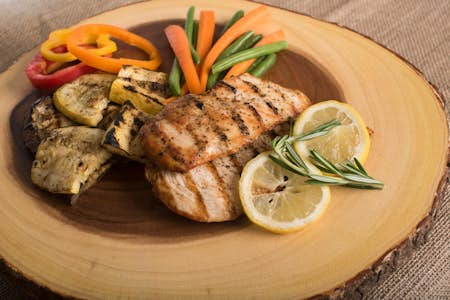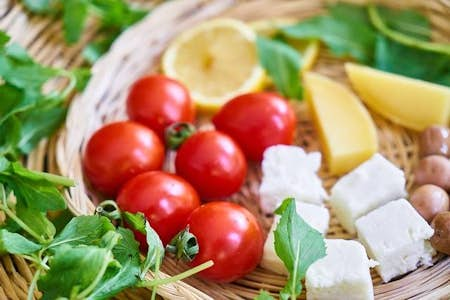The key to making sure your diet is low in histamines is to eat fresh. Foods like fresh fruit and vegetables are low in histamines as they’ve had less time to ferment and age. Older fruits, therefore, tend to have higher levels of histamine. There are loads of creative ways to use beautiful fresh ingredients. Keep reading for some tasty ideas for dishes that will help you on your way to eating what’s right for you and your body.
A low histamine diet helps you establish what the best foods are for you. Incorporating these foods and recipes into your diet will help prevent bad reactions to certain foods and reduce symptoms we experience as allergic reactions.
Frustrated with food waste or don't know where to start with a shopping list? Try a food subscription box to wash those worries away and put your diet - and finances - on the right track!
While histamines are essential in repairing minor injuries such as cuts, grazes or stings, an overproduction of them can cause you to suffer symptoms of histamine intolerances. Symptoms could include headaches, IBS, itching, or sneezing. Histamines are in the food we eat, which is why keeping track of your diet will help you control your body’s reactions to certain foods and minor traumas associated with your diet.
Factors such as hormones, stress and your immediate environment can all contribute to the rate at which your body releases histamines. An overproduction of them is what results in allergic reactions. When you lower the number of histamines in your diet, and therefore your body, you will decrease the chances of having one of these undesirable reactions.
We spoke to Tanya Ednan-Laperouse from the Natasha Allergy Research Foundation, who told Age Times: "We hear from a number of people living with histamine intolerance and it can be extremely debilitating and difficult to live with. The main treatment consists of avoiding histamine-rich foods so preparing and cooking your own meals is often the only way forward to feel well.
"Some people mistake it for an allergy because symptoms can appear to be very similar – it’s also hard to diagnose and is thought to affect approximately 3% of the population, with 80% being women over the age of 40.
"While histamine intolerance isn’t considered life-threatening, the symptoms can be severe and frightening and sends people to Hospital A&E departments. It’s only in the last decade that histamine intolerance has been scientifically accepted as a condition so there is at least hope now for research into how and why people become histamine intolerant."
These recipes will inspire you to cook up some tasty meals to make you and your body happy. It's great to have fun with alternative ingredients and surprise yourself with the yummy flavours you'll come up with for breakfast, lunch, and dinner.
1. Cinnamon Roll Oatmeal
Start the day with this dish, and you’ll be feeling on top of the world! Enjoy this delightful breakfast that has all the ingredients of a tasty cinnamon roll.
Ingredients
- 1/2 a cup and 2 tsp of milk
- 1 cup of rolled oats
- 1 tsp. of ground cinnamon, divided
- 3 tbsp. of powdered sugar
Method
- Bring ½ a cup of milk to a boil in a medium saucepan while over high heat.
- Once the milk is boiling, stir in oats and 1/2 a teaspoon of the cinnamon.
- Reduce the heat to low, and allow the oats to simmer in the milk until they are tender and creamy. This should take around 5 minutes.
- For your icing, in a small bowl, whisk together the remaining two teaspoons of milk and the powdered sugar.
- To serve, put the oatmeal in a bowl and drizzle the icing over the top of it. Garnish with the remaining cinnamon and enjoy!
Low histamine tip: Substitute the milk with oat milk if dairy products are not your friend. This will add more flavour to the dish for extra deliciousness.
2. Coconut Turmeric Cauliflower Bowls
This simple dish is a quick and easy dish, perfect for midweek dinners. It's fresh and packed with flavour, so it will soon become one of your favourite go-to meals.
Ingredients
- 1 head cauliflower riced (this should equate to about 5 cups)
- 2 tbsp of avocado oil
- 1 tbsp of turmeric
- 1 tbsp of curry powder
- 1 cup of chicken stock
- 1 cup of tinned coconut milk
- 1/2 tsp of sea salt
- ⅔ of a cup of chopped, fresh coriander
- 1 cup of frozen peas
Method
- Heat the avocado oil in a large pan over medium heat.
- Once the avocado oil is hot, add spices.
- Stir together and stir until fragrant. This should take about 1 minute.
- Add the chicken stock, coconut milk and salt.
- Stir well so that the ingredients come together.
- Add riced cauliflower to the mixture while stirring
- Allow the pan to simmer for about 10 minutes or until the cauliflower rice is soft. Be careful and do not allow the cauliflower to become mushy.
- Add the frozen peas and allow the dish to cook for another 5 minutes.
- Once the peas are cooked, remove the pan from the heat
- Mix in the coriander.
- Serve in bowls and enjoy!
Low histamine tip: If you’re using a stockpot or a stock cube, make sure you check for allergens such as gluten.
3. Salmon with Crispy Coconut Kale
This salmon dish is a great lunchtime dish, especially for those working from home or who otherwise need a quick and healthy fix. Salmon is a low histamine fish, while some seafood, like shellfish, are typically higher in histamines.
Ingredients
- ½ of tsp sea salt
- 1/2 a cup of coconut oil
- 1 tsp of toasted sesame oil
- 2 tbsp of low sodium soy sauce
- 1 tbsp Sriracha
- 3 sweet potatoes, cut into cubes
- 1 tsp of paprika
- 1 bunch of cavolo nero, with the ribs removed and sliced into strips
- 1 cup of coconut flakes, unsweetened
- 1 to 1 1/2 pounds salmon, cut into four fillets
Method
- Preheat your oven to 200° C.
- In a small pan, heat all but one tbsp of the coconut oil until it melts and becomes liquid.
- In a jar with a lid, add the melted coconut oil, sesame oil, low sodium soy sauce, and Sriracha. Seal the jar tightly and shake it well until all the ingredients are well combined.
- On a baking tray, place the cubed sweet potatoes.
- Melt the remaining tbsp of the coconut oil.
- Once melted, drizzle the oil over the sweet potatoes and dust them with paprika. Ensure the cubes are well coated, and don’t be scared to get your hands involved.
- Bake for 30 minutes or until the potatoes are tender.
- On another baking tray, place the sliced cavolo nero leaves and combine them with the coconut flakes.
- Drizzle with about 2/3 of the dressing. Toss until well coated, again using your hands.
- Use the remaining salmon with the remaining dressing. Bake the salmon and coconut kale mixture for the remaining 15 minutes that the sweet potatoes are in the oven. Make sure the salmon is cooked through, and be careful not to burn the kale.
- After 30 minutes of total baking time, take everything out of the oven.
- Serve in a bowl and enjoy! If you’re a fan of sesame oil and soy sauce, feel free to add a little extra to top the dish off.
Low histamine tip: Sesame oil is a great way to incorporate Asian, nutty flavours into a dish. While containing some histamines, a reaction to it is rare, making it ideal to use in low histamine diets.
4. Ricotta Pasta with a Toasted Pistachio Crumb Topping
As a rule of thumb, nuts tend to be high in histamines, but pistachios are a delicious exception. This yummy pasta dish is perfect for dinner parties or a quiet night in.
Ingredients
- 150 g of farfalle or pasta of choice (go for the shorter ones such as penne or pasta shells)
- 1 tbsp of butter
- 1 clove of garlic minced
- 100 g of ricotta cheese
- 2 tbsps of unsalted pistachio nuts crushed
- 1 tsp of dried thyme
- A pinch of sea salt
- A pinch of fresh parsley
Method
- In a saucepan or a pot, add water, sea salt and olive oil.
- Bring the water to a boil.
- Add the pasta to the boiling water and cook for as long as the packaging says you should, usually 5 - 15 minutes.
- After the pasta has cooked, save one cup of the pasta water and drain the rest using a colander.
- Over low to medium heat, melt the butter in a deep pan and slowly cook the garlic and thyme for 2-3 minutes. Stir in the ricotta while breaking it up.
- Gradually add the reserved pasta water to the pan and continue to stir until you get to your ideal sauce consistency. It should be slightly thick and not too runny.
- Add your pasta to the pan and stir well, so it is covered with your ricotta sauce. Season with salt and pepper if using. Remember to avoid pepper if you are allergic to it.
- In a smaller pan on low heat, add the crushed pistachios. This will allow them to toast, enhancing the nutty, buttery flavour.
- Transfer the ricotta pasta to your bowls and sprinkle over the crushed and toasted pistachios.
- Garnish with the freshly chopped parsley and serve immediately to enjoy!
Low histamine tip: There are loads of plant-based and dairy-free alternatives to ricotta and butter. Most grocers now have a ‘free from’ section with delicious products. On your net shop, take a look at these alternatives to see how creative you can get. Gluten-free pasta is also just as tasty!








